#huu-ay-aht
Explore tagged Tumblr posts
Text
It was Indigenous People's Day so I made some intersex + Indigenous flags
Since I've been on a roll in making intersex flags. First: flags for the three major types of Indigenous groups whose lands were stolen to create the country I live in (Canada):
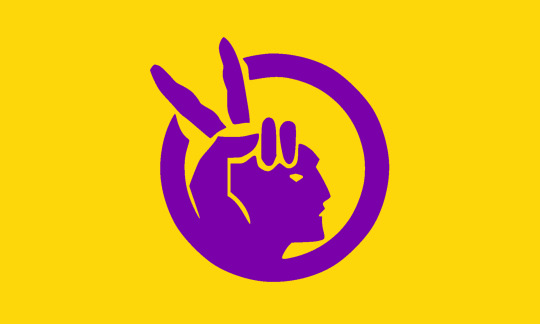
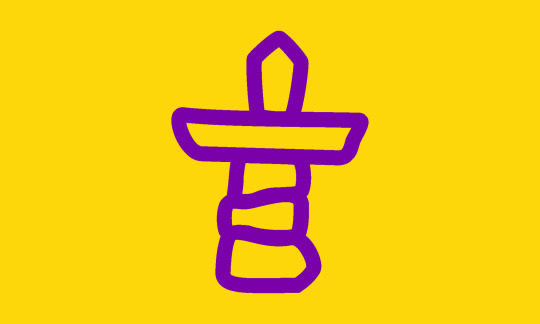

Left: intersex and First Nations (American Indian Movement) Middle: intersex and Inuit Right: intersex and Métis
Then I made some intersex flags for some specific First Nations whose cultures I have at least basic familiarity with: Left: Haida ©️........... Middle: Huu-ay-aht ©️....... Right: Musqueam ©️
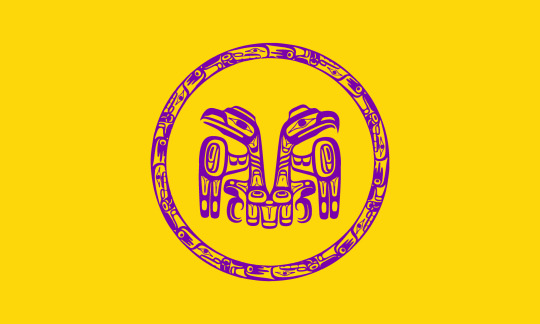
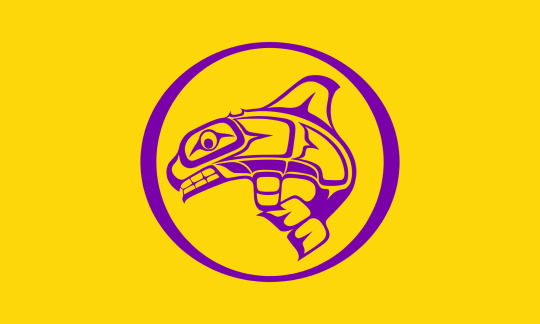


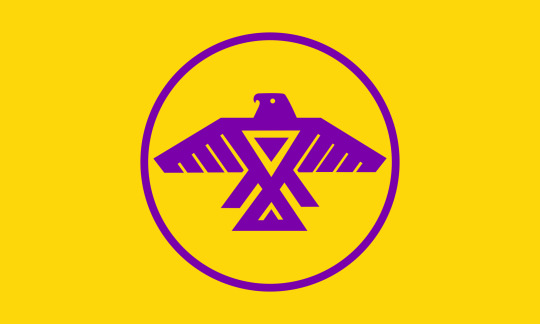
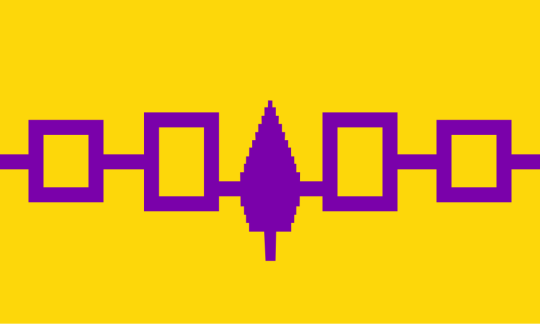
Left: Blackfoot ........ Middle: Anishinaabe ©️ ... Right: Haudenosaunee
Note: The last three are confederacies of multiple nations. Order is based on geography, going west to east.
Personal Note: I am a settler and am not a member of any of these nations. I've moved many times in my life, and these nations are the rightful stewards of the lands that I personally feel I have the most connection to. 💜
Tagging for archival: @intersexflags @varsex-pride @radiomogai @beyond-mogai-pride-flags
Edit to note: at the time I made this post I was under the impression all of the First Nations flags above were public domain. I have since learnt that the license information of many of the original flags on Wikimedia Commons were incorrect.
The Haida, Huu-ay-aht, Musqueam, and Anishinaabe flags are all definitely copyrighted. You can still use and share the intersex versions, just don't go uploading them to Wikimedia Commons, or using the designs for commercial purposes (unless you get permission from the relevant First Nation!)
The AIM, Inuit, Métis, and Haudenosaunee flags are all public domain, and so my intersex versions are public domain too.
The copyright status of the Blackfoot flag I'm not certain about - I haven't been able to track down that information one way or the other.
#intersex#actually intersex#indigenous peoples day#fuck thanksgiving#indigiqueer#intersex flags#american indian movement#inuit#metis#haida#huu-ay-aht#musqueam#blackfoot#anishinaabe#haudenosaunee
327 notes
·
View notes
Text
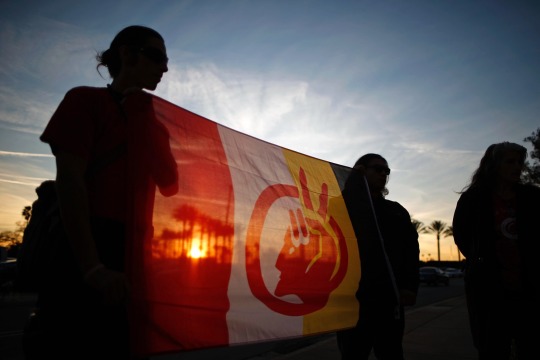
Native American and First Nations Flag Wars: Round 1
This tournament focuses on the flags of indigenous groups of the United States and Canada in honor of National American Indian Heritage Month. Thank you to everyone for your submissions! I think this is going to be a fun tournament with some great flags!
Round 1:
1. Huu-ay-aht First Nations vs. Miccosukee vs. Mashantucket Pequot Tribe vs. Teslin Tlingit Council
2. Nez Perce vs. Pimicikamak Cree Nation vs. United Keetoowah Band of Cherokee Indians vs. Cahto
3. Anishinaabe vs. Clatsop vs. Métis vs. Upper Skagit Indian Tribe of Washington
4. Cherokee Peace Flag vs. Peguis First Nation vs. Haisla vs. Chief of the Secwépemc
5. Jatibonicu Taino Tribal Nation vs. Missisquoi Abenaki Tribe vs. Colorado River Indian Tribes vs. Nisga'a
6. Chinook Nation vs. Hopi Nation vs. Mi'kmaq (horizontal) vs. Pawnee Nation
7. Northern Cheyenne Indian Reservation vs. Ahtahkakoop Cree Nation vs. Cowasuck Band of the Pennacook-Abenaki People vs. Tłı̨chǫ
8. Inuvialuit vs. Seminole Tribe of Florida vs. Mohawk Warrior Society vs. Eel Ground First Nation
9. American Indian Movement vs. Navajo vs. Natchitoches Tribe of Louisiana
10. Secwépemc vs. Pine Ridge Indian Reservation vs. Arctic Athabaskan Council
11. Tahltan Nation vs. Blackfeet Nation vs. Musqueam
12. Santa Ynez Band of Chumash Mission Indians vs. Haudenosaunee/Iroquois vs. Poarch Band of Creek Indians
13. Haida vs. Piapot First Nation vs. Ninilchik
14. Inuit Tapiriit Kanatami vs. Kitchenuhmaykoosib Inninuwug First Nation vs. Arapaho
15. Mi'kmaq Nation vs. Lax Kw'alaams Band vs. Pascua Yaqui Tribe
16. Cherokee vs. Ute Indian Tribe vs. Robinson Rancheria of Pomo Indians of California
#flags#vexillology#native american and first nations flag wars#tournament#brackets#native american#first nations
24 notes
·
View notes
Text
Hiking Journal: West Coast Trail
Day 0.6: Across the Island
August 26
After a hotel breakfast of good muffins and porridge in a cup (but with hot water, and sugar, which would be considered doubly luxurious while camping!) we had to stock up on cold medicine and last minute supplies, so sadly there was no time for a Nanaimo bar before leaving Nanaimo. A leaky tire on the car meant driving quick like to the Port Alberni Canadian Tire where there was an opening for a mechanic. This meant having to pass through a provincial park of splendid old growth firs without time for a glance. Then it was a long lunch at a Noodle Box in the big-box outskirts of town while waiting on the tire shop.
The day grew more relaxed and fun into the grey drizzly afternoon. Took a few minutes to explore the the harbour, where some neat boats were docked. The Songhee is a floating b&b. The Frances Barkley is one of two ships, the other being the then-absent famed old Lady Rose, that ply the mail and passenger trade between Alberni and Bamfield, down the inlet on the more open coast. For years these boats were the only public connection to Bamfield, but now there’s a fully paved if slow and winding road.



The rain carried on soaking deep into every bit of forest as we pulled into Pachena Bay Campground at the north end of the West Coast Trail, a few kilometres from the town of Bamfield. Long arguments on bushcraft, the finer point of tarps and knots and string adjustments, followed as we rigged up a tent shelter from brand new Port Alberni Canadian Tire tarp and paracord. I think we did a good job, though that didn’t stop everything set up from soaking through as the rain picked up into the evening.

Flora’s, the best restaurant in Bamfield (and since the hotel pub was closed, the only one) is on the west side of town. The western peninsula has no road access, so a couple of water taxis make hefty sums ferrying people across the water. A surly raincoated guy named N—- was the only one working, and to get us across the channel in the rain he charged ten dollars per person, per way. That’s a pricey premium on dinner. Good thing my spice-blackened cod burger was fantastic. West Bamfield has a very charming boardwalk along the foreshore, so we wandered along that, soaking up more rain, after dinner.

The boardwalk leads past painted cottages,


high-masted fishing boats, tiny seaplanes,

and little dark patches of shore-wood all decorated with stringlights and little painted mushrooms.

A whale’s rib rests on one of the docks.

On the soaking wet boat ride back to the east side, N—- was still grumpy, but we also rode with K——, a Huu-ay-aht Trail Guardian with 25 years on the job. See, the West Coast Trail passes mostly through Pacific Rim National Park, but also through scattered small village-based First Nations land areas of three different Nations. It’s a very different geographical arrangement from the larger reserves I’m familiar with on the prairie. That means that maintenance of the trail falls both to Parks rangers and to Guardians employed directly by the three nations, each of which have a cabin in their land along the trail for the Guardians on shift. K—— was heading out to work soon after a salmon fishing derby, and invited us to come visit the cabin, if he was there when we passed by, for fresh salmon and coffee. Yes please!
Crawled into sleeping bags wet, but at least not too cold, to get well rested for further adventures the next day.
#my photos#hiking#Vancouver island#west coast trail#pacific northwest#adventurecore#british columbia
1 note
·
View note
Text

TORONTO STAR -- The West Coast may not be ready for Canada's next giant earthquake. But this First Nation is.
BY KATHARINE LAKE BERZ (FGJ '22) -- ANACLA, B.C. — Looking back, Qiicqiica Dennis thinks his awful trip five years ago — shattered, and terrified in the back of a car on a bumpy road home — echoed what his Huu-ay-aht ancestors experienced during the legendary earthquake and tsunami that happened generations ago. The heaving ground, the struggle to stay alive. READ MORE.
0 notes
Link
This dissertation describes the results of ethnographic research on the wilderness tourist attraction known as the West Coast Trail on Vancouver Island, British Columbia. It investigates settler-colonial views of and experiences in a space that is claimed by the Canadian state and is also part of the traditional territories of indigenous peoples. The entanglement of wilderness tourism and settler-colonialism is analyzed in the contemporary Canadian context where, it is argued, Canadian nationalism and indigenous reconciliation are in conflict. Particular attention is paid to the complex ways a space is constructed as wilderness (and therefore a-cultural and a-historical) through both material and representational actions of the settler-colonial state. The trail is a 75 kilometre backcountry hiking trail managed as the West Coast Trail Unit of Pacific Rim National Park Reserve. It is co-managed by Parks Canada and the Huu-ay-aht, Ditidaht and Pacheedaht First Nations. Fieldwork was conducted from 2013-2014, where the investigator based herself in the settler community of Bamfield and repeatedly hiked the length of the trail interacting with both visitors and locals. Qualitative data was collected through interviews and participant observation with both locals living on and near the trail and hikers recreating in the national park. This thesis posits that Canadian settler-colonialism venerates not only idealized images of a national landscape but also the active engagement with nature through recreation. It is contended that within this active, corporeal, and material engagement there is potential for challenges to static colonial narratives of wilderness that mask Indigenous territory.
0 notes
Link
The Huu-ay-aht First Nations are beginning the process of reclaiming some of their cultural artifacts from the Royal B.C. Museum following the award of a repatriation grant.
In May, the Huu-ay-aht received $35,000 in order to fund repatriation research and activities.
The grant is being used to identify and catalogue the items the nation wants repatriated from the Royal B.C. Museum (RBCM), which will join the items previously returned to the nation from the museum in 2016.
"Our history was extracted from us, and this is about bringing back a little bit of our history, one piece at a time, knowing that our treasures are scattered all over the world," Huu-ay-aht Coun. Edward R. Johnson said in a statement.
Continue Reading.
Tagging: @politicsofcanada
#Indigenous#First Nations#Huu-ay-aht First Nations#colonialism#cdnpoli#canada#canadian politics#canadian news#canadian#Museums#British Columbia
425 notes
·
View notes
Link
Excerpt from this story from Sierra Club:
For weeks, activists in the temperate rainforest on Vancouver Island, near the town of Port Renfrew, have been blockading a logging road. On one day, more than 40 logging trucks were turned back. If and when the police finally free the protesters and clear the blockade, it is likely another will take its place. This is the last card being played in an effort to protect one of the last large swaths of old-growth forest left in a Canadian province that, environmentalists contend, has lost its way.
This unprotected and intact watershed on southern Vancouver Island, British Columbia, is known by some as Fairy Creek Valley; for others, it is the traditional and unceded territory of the Pacheedaht, Huu-ay-aht, and Ditidaht First Nations. For loggers, it is timber license #46.
Since August 7, Fairy Creek has been the site of an ongoing series of protests and blockades designed to keep loggers out of the valley. It is a battle that has pitted environmentalists against loggers, BC residents against the provincial government that has ignored their concerns, and even a First Nations chief against an elder. And it’s not going away anytime soon.
The logging company Teal-Jones has been granted permission to clearcut the area. It has a signed an agreement with the Pacheedaht First Nation. The area to be logged is only 20 hectares, according to Teal-Jones. The company has gone to court and won injunctions forcing the Royal Canadian Mounted Police to arrest the protesters, remove the numerous camps around the area, and get to its very profitable work of clearcut-logging an old-growth forest. More than 150 have been arrested thus far, and still, they come.
The protesters have scored at least one victory, however small. The three First Nations of the region released a joint statement on June 5 requesting that the provincial government grant a two-year deferral of logging old growth while it continues resource operations in other areas.




24 notes
·
View notes
Text
Cree.
The Cree (Cree: Nēhiyaw; French: Cri) are one of the largest groups of First Nations in North America, with over 200,000 members living in Canada. The major proportion of Cree live in Canada and live north and west of Lake Superior, in Ontario, Manitoba, Saskatchewan, Alberta and the Northwest Territories. About 38,000 live in Quebec.

Dene.
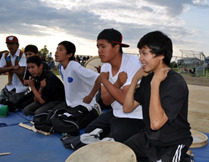
The Dene people (/ˈdɛnɛ/ DE-neh) (dene) are an aboriginal group of First Nations who inhabit the northern boreal and Arctic regions of Canada. The Dene speak Northern Athabaskan languages. Dene is the common Athabaskan word for "people" (Sapir 1915, p. 558). The term "Dene" has two usages. More commonly, it is used narrowly to refer to the Athabaskan speakers of the Northwest Territories and Nunavut in Canada, especially including the Chipewyan (Denesuline), Tlicho (Dogrib), Yellowknives (T'atsaot'ine), Slavey (Deh Gah Got'ine or Deh Cho), and Sahtu (the Eastern group in Jeff Leer's classification; part of the Northwestern Canada group in Keren Rice's classification).
Nakoda First Nation
The Nakoda (also known as Stoney or Îyârhe Nakoda) are an indigenous people in Western Canada and, originally, the United States.
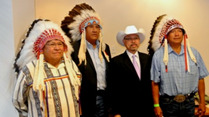
They used to inhabit large parts of Alberta, Saskatchewan, and Montana, but their reserves are now located in Alberta and in Saskatchewan, where they are scarcely differentiated from the Assiniboine. Through their language they are related to the Dakota and Lakota nations of the Great Plains and the Rocky Mountains, part of the large Sioux Nation.They refer to themselves in their own language as "Nakoda", meaning friend, ally.
Ucluelet First Nation.

The Ucluelet First Nation, also known as the Yuułuʔiłʔatḥ (Yuu-thlu-ilth-aht) is the First Nations treaty government of the Yuułuʔiłʔatḥ in the Canadian province of British Columbia, located on the west coast of Vancouver Island on the northwest side of Barkley Sound.
Nipissing First Nation.
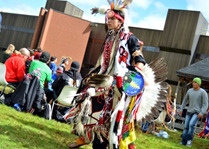
Nipissing first nation 28th annual pow wow 2016.The Nipissing First Nation consists of historic First Nation band governments of Ojibwe and Algonquin descent who, following succeeding cultures of ancestors, have lived in the area of Lake Nipissing in the Canadian province of Ontario for about 9,400 years. They are referred to by many names in European historical records, since the colonists often adopted names given to them by other nations.
Tseshaht First Nation.


My name is Eunice Joe (Tla-ah-shuks). I am Nuu-chah-nulth from the Tseshaht First Nation. My lineage stems from the Tseshaht, Huu-ay-aht and Squamish Nations. My parents are Judy Joe (Dick) and (late) Herbie Joe. My Maternal Grandparents are Thomas Dick from Tseshaht and Veronica Dick (Guss) from Squamish. My Paternal Grandparents are Wilson Joe from Huu-ay-aht and Bella Joe (Watts) from Tseshaht.Tseshaht First Nation is an amalgamation of many tribes up and down Alberni Inlet and in the Alberni Valley of central Vancouver Island in the Canadian province of British Columbia. They are a member of the Nuu-chah-nulth Tribal Council which includes all other Nuu-chah-nulth-aht peoples except the Pacheedaht First Nation.
10 notes
·
View notes
Text
All want to be understood few wish to understand

The grim truth about the News in Canada is that Canadians,need to know more about about Brexit, what US Congress is up to and what did Dinky Donnie do today, than they do the Indigenous reality in Canada.
Now It’s Election Time in Canada. You'll hear all the Politicians debating the “Major Issues”. You may hear the occasional First Nations, Inuit and Métis “Issues”discussed. The issue will be seen in relation to pipelines and howIndigenous Rights affect business interests. Very little will be said about rights to safe drinking water, decent housing, missing First Nations women, education, healthy diet or even human rights.
We’ll receive news about Human Rights elsewhere, Hong Kong or North Korea. As far as Fires in Brazil it’s all about the environment world wide. Who the fuck do we think live in the burned down world heritage rain forests all worry about? It is their whole world right now and in living color. Their “rights” conflict with business interests, but far less would be said if only the indigenous inhabitants were affected
Try not to be like the Political shills running in this election.Take time to learn what it means to be an “issue”. Don’t set a time limit, keep learning.
In 2016, 1.6 million people identified as Indigenous in Canada. The issues aren't abstract. Start to learn what first nations think their “issues” are. Start to understand by knowing who. Take some time and seek information on your own. Search names, find places, find out about these lives as they are. No need to think you have to understand by Election Day 2019.
Please seek the truth for yourself. Sometimes we need labels to understand. Here is a list of first nations in Canada. Knowledge is the power behind change. Use the internet and libraries. You can even contact band offices for information. Please learn, few understand the First Nations, Inuit and Métis communities of Canada.
The list is not comprehensive, it does provide insight into the indigenous societies, and cultural ties in Canada. Start anywhere and ask questions for yourself.
Abenaki0
Innu (Montagnais-Naskapi)
Oneida
Ahousaht
Interior Salish
Onondaga
Algonquin
Inuinnait (Copper Inuit)
Pacheenaht
Assiniboine
Inuvialuit (Mackenzie Inuit)
Petun
Atikamekw
Kainai (Blood)
Piikani (Peigan)
Baffin Island Inuit
K'asho Got'ine (Hare)
Saldermiut Inuit
Beothuk
Kaska Dena
Sahtu Got'ine (Bearlake)
Blackfoot Confederacy
Kivallirmiut (Caribou Inuit)
Secwepemc (Shuswap)
Cayuga
Ktunaxa (Kootenay)
Sekani
Central Coast Salish
Kwakwaka'wakw (Kwakiutl)
Seneca
Coast Salish
Kyuquot and Checleseht
Shuta Got'ine (Mountain)
Cree
Labradormiut (Labrador Inuit)
Siksika (Blackfoot)
Dakota
Lilwat (Lillooet)
Slavey
Dakelh (Carrier)
Lingit (Tlingit)
Stoney-Nakoda
Dane-zaa (Beaver)
Métis
Syilx (Okanagan)
Dene
Mi'kmaq
Tagish
Denesuline (Chipewyan)
Mohawk
Tahltan
Ditidaht
Mowachaht-Muchalaht
Tla-o-qui-aht (Clayoquot)
Ehattesaht
Nahani
Tlicho (Dogrib)
Gitxsan (Gitksan)
Netsilingmiut (Netsilik Inuit)
Toquaht
Gwich'in
Neutral Confederacy
Tr'ondëk Hwëch'in (Han)
Haida
Nicola-Similkameen
Tseshaht (Sheshaht)
Haisla (Kitamaat)
Nisga'a
Tsilhqot'in (Chilcotin)
Haudenosaunee (Six Nations or Iroquois)
Nlaka'pamux (Thompson)
Tsimshian
Heiltsuk
Northern Georgia Strait Coast Salish
Tsuut'ina (Sarcee)
Hesquiaht
Nuchatlaht
Tutchone
Hupacasath (Opetchesaht)
Nunavimmiut (Ungava Inuit)
Uchucklesaht
Huu-ay-aht
Nuu-chah-nulth
Ucluelet (First Nation)
Huron-Wendat
Nuxalk (Bella Coola)
Wolastoqiyik (Maliseet)
Iglulingmuit (Iglulik Inuit)
Odawa
Wetal (Tsetsaut)
Inuit
Ojibwa
Yellowknives (band)

14 notes
·
View notes
Text
PostDoc: UCalgary.SalmonEvolution
The Rogers Lab at the University of Calgary has a PDF opportunity to work on Pacific Salmon evolution and genomics on Vancouver Island, British Columbia Start date: April 1, 2019 or earlier Salary: 46,000 annually for two years; standard University of Calgary PDF benefits package Deadline to apply: Review of applications will start asap and continue until the position is filled Project: Sustaining Canada's natural resources and food supply for future generations is a rapidly growing challenge that requires an understanding of how populations will respond and adapt to current and future environmental stressors. Salmon produce food and recreation for the people of the Pacific Northwest and are the keystone species of coastal ecosystems and human economies within this area. Yet, salmon populations are under pressure and we do not understand the epigenetic and genetic factors that influence their odds of survival. In particular, while hatchery programs release millions of fish yearly, it remains unclear how many of these released salmon survive and whether they contribute to increasing the wild population size. The PDF will join a unique and growing partnership between the Nitinat River Hatchery, the Bamfield Marine Sciences Centre, Department of Fisheries and Oceans (DFO) and the Ditidaht and Huu-ay-aht First Nations to test the environmental and genomic consequences of alternative hatchery salmon rearing practices. The PDF will work closely with Dr. Kristi-Miller-Saunders (DFO) and Dr. Brad Anholt (University of Victoria). Our ability to raise thousands of Coho salmon families used in enhancement programs under different rearing conditions is a unique and powerful opportunity to understand how hatchery rearing practices may impact salmon survival and the genetics of domestication. More info on the position and our group can be found here: http://bit.ly/2EoTPRT An application package consisting of a Curriculum Vitae and the names of three references should be emailed as a single PDF to srogers@ucalgary.ca. The BMSC is a world-class teaching and research facility located in traditional territories of the Huu-ay-aht First Nations, on the outer west coast of Vancouver Island, Canada. Our campus is situated on 65 hectares in Barkley Sound with access to a remarkable diversity of marine, terrestrial, freshwater and cultural sites of the North East Pacific basin. Located in the heart of Canadas Pacific Rim National Park, the town of Bamfield has a small but exceptionally vibrant community that shares a history of trust and collaboration with the Huu-ay-aht First Nations. The town is also the northern terminus of an iconic Canadian Trail, the West Coast Trail. The stunning surroundings of the rain forest, deserted beaches, uninhabited islands, rugged coastline, and world class diving inspire creativity and discovery srogers@ucalgary.ca "Sean M. Rogers" via Gmail
1 note
·
View note
Text
West Coast First Nations’ child care repatriation an early success story - Kelowna Capital News
West Coast First Nations’ child care repatriation an early success story – Kelowna Capital News
Members of the Huu-ay-aht First Nation burn a copy of the Indian Act during a ceremony where they held the first sitting of their legislature and signed a constitution after implementing the historic Maa-nulth Final Agreement in Anacla, B.C., in the early morning hours of Friday April 1, 2011. THE CANADIAN PRESS/Darryl Dyck The Huu-ay-aht First Nations has released an independent evaluation of…

View On WordPress
0 notes
Text




Native American and First Nations Flag Wars: Round 1, Bracket 1
19 notes
·
View notes
Photo
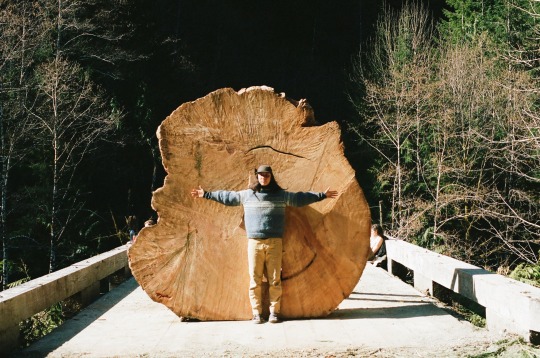
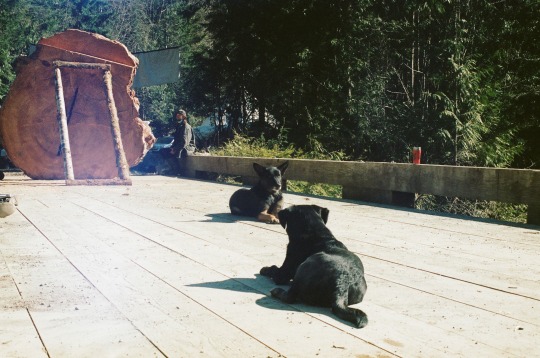
Conversation between loggers overheard at a rural fishing lodge where I stay for work:
"Is this really the issue they (Teal Jones) want to be hanged on? It was just too close to Victoria..."
The mentality among resource extractors is that the proximity to urban populations means proximity to potential protest due to the accessibility and firsthand witnessing of destructive extractive practices of precious biodiverse ancient forests.
Just as logging was deferred to Huu-yaa-aht territory after the success of the Meares Island War of The Woods in Tla-o-qui-aht territory, I have to wonder... what happens when the Old Growth needing protecting isn't a few hours drive from Victoria? What happens after the Fairy Creek protest and which old growth stand is next? What are our sustainable alternatives to old growth logging?
I am grateful for those who defended Fairy Creek allowing us to celebrate this success and am hopeful of the First Nations following suit- but the fight is not over. Sign the petitions. Write the letters. And let us not forget the complexities and nuances of Indigenous rights, title, and access to economic opportunities. As Huu-ay-aht Chief Councillor Robert Dennis Sr. is quoted in the Hashilthsa, "We've got to balance the two: we need an economy, but we also need a healthy environment. If you can find an alternative way that we can have an economy, bring it to us. Nobody is coming forward."
Pacheedaht Territory
#worthmorestanding #Fairycreek
images and words by erehkah no reproduction or use without permission
0 notes
Photo

WCT Day 1 at Gordon River. . The West Coast Trail passes through the territories of the Pacheedaht, Dididaht and Huu-ay-aht First Nations. The trail has miles of boardwalks, over a hundred ladders and 108 bridges. It’s maintained by First Nations guardians and a small Parks Canada maintenance team. The effort put into maintaining the trail while protecting the fragile habitats from being trampled is enormous. . It felt like (and was!) a privilege to be able to experience the beauty of these wild spaces thanks to the hard work and generosity of these communities. #cheesybuttrue . . . #coastsalishterritory #mecstaffer #goodtimesoutside #explorebc #instagood #natureisamazing #vancouverisland #britishcolumbia #beautifulbc #pacificnorthwest #pnwonderland #52hikechallenge #hike25 #westcoasttrail #leavenotrace #nature #outdoors #bchikes #landscape #sky #hikingadventures #view #forest #hikinglife #trails #hiking #naturephotography #backpacking #camping (at Pacheedaht First Nation)
#52hikechallenge#backpacking#beautifulbc#natureisamazing#westcoasttrail#cheesybuttrue#coastsalishterritory#pacificnorthwest#hike25#landscape#vancouverisland#bchikes#hikingadventures#hiking#sky#leavenotrace#outdoors#goodtimesoutside#britishcolumbia#view#naturephotography#trails#instagood#forest#explorebc#hikinglife#nature#camping#mecstaffer#pnwonderland
1 note
·
View note
Text
Canada and British Columbia invest in infrastructure in the Vancouver Island region to create jobs and strengthen communities





Canada and British Columbia invest in infrastructure in the Vancouver Island region to create jobs and strengthen communities
From: Infrastructure Canada
News release
New investments in community infrastructure by the governments of Canada and British Columbia will benefit Island communities while also supporting economic recovery in the context of the COVID-19 pandemic by getting projects under way and meeting communities’ needs as they restart their economies.
Port Alberni, British Columbia, July 3, 2020—New investments in community infrastructure by the governments of Canada and British Columbia will benefit Island communities while also supporting economic recovery in the context of the COVID-19 pandemic by getting projects under way and meeting communities’ needs as they restart their economies.
These investments will play a key role in strengthening local economies, and helping ensure all British Columbians have access to the services and cultural networks they need to build resilient communities.
Today, the Honourable Catherine McKenna, Minister of Infrastructure and Communities; the Honourable Maryam Monsef, Minister for Women and Gender Equality and Rural Economic Development; and the Honourable Scott Fraser, Member of Legislative Assembly for Mid Island-Pacific Rim, on behalf of the Honourable Selina Robinson, B.C. Minister of Municipal Affairs and Housing, announced funding for 22 projects on the Island under the Investing in Canada Infrastructure Plan.
The Huu-ay-aht First Nations will build a new culture centre to provide the community with a language training room, a kitchen, dedicated areas for the production and the sale of arts and crafts, multi-purpose rooms, and washrooms. The facility will also have a multi-purpose field with bleachers for soccer and softball, and a presentation stage with stands for outdoor cultural events.
The Town of Ladysmith will build a new Arts and Heritage Hub at the site of the town’s historic machinery shop to showcase local culture and history, and highlight the town’s positive relationship with the Stz’uminus First Nation. This hub is part of a waterfront redevelopment plan to support community development and will provide space for art exhibitions, performances and special events.
Among the other projects receiving this funding are improvements to community centres, health centres, storm water management, drinking water and wastewater facilities, cultural facilities and social support hubs.
The Government of Canada is contributing more than $33.2 million, the Government of British Columbia is contributing over $8.7 million and the individual applicants are contributing more than $12.2 million to these projects through the Community, Culture, and Recreation Infrastructure Stream (CCRIS), and the Rural and Northern Communities Infrastructure Stream (RNIS) of the Investing in Canada Plan.
More than $23.2 million of the federal and provincial funding is going to eight projects in Indigenous communities.
Further announcements of infrastructure investments will follow in the coming months as Canada and British Columbia work together to support jobs, improve our communities, and safely and sustainably restore economic growth.
Quotes
“Investing in community centres, recreation and cultural facilities means children and youth will have a safe place to play and learn, seniors have a place to meet, our clubs and groups can have a home. These facilities build strong, dynamic communities where people want to put down roots and do business. Together with the Province, we are supporting projects that will create jobs and bring residents new facilities and programs that will make a real difference in people’s lives for years to come.”
The Honourable Catherine McKenna, Minister of Infrastructure and Communities
“It is more important than ever to support rural and Indigenous communities. The projects we’re announcing today will help smaller communities on the Island rally now while supporting growth, helping preserve local heritage, and enhancing residents’ quality of life.”
The Honourable Maryam Monsef, Minister for Women and Gender Equality and Rural Economic Development
“In partnership with the federal government, we are investing in infrastructure that will strengthen communities here on the island and across B.C. The construction of the Ahtaapq Creek Hydropower Project will support the Hesquiaht First Nation in their transition to cleaner energy sources and help reduce greenhouse gas emissions. I’m also pleased to see funding going towards several community centres in my constituency. People need public spaces and services to support their health and well-being now more than ever.”
The Honourable Scott Fraser, Member of Legislative Assembly for Mid Island-Pacific Rim, on behalf of the Honourable Selina Robinson, Minister of Municipal Affairs and Housing
Quick facts
Through the Investing in Canada Infrastructure Plan, the Government of Canada is investing more than $180 billion over 12 years in public transit projects, green infrastructure, social infrastructure, trade and transportation routes, and Canada’s rural and northern communities.
$25.3 billion of this funding is supporting social infrastructure in Canadian communities.
$2 billion of this funding is supporting infrastructure projects that meet the unique needs of rural and northern communities like facilities to support food security, local access roads and enhanced broadband connectivity. In addition, $400 million is being delivered through the Arctic Energy Fund to advance energy security in the territories.
The governments of Canada and British Columbia are providing more than $134 million for the first intake of project applications under the Community Culture and Recreation Infrastructure Stream (CCRIS) of the Investing in Canada Plan, and more than $94 million for the first intake under the Rural and Northern Communities Infrastructure Stream (RNIS).
The second intake for both streams was announced on June 25, 2020 with the following funding available from the governments of Canada and British Columbia combined:
CCRIS: up to $100.6 million
RNIS: up to $58.7 million




Listen to the Latest Podcasts from Neinstein Personal Injury Lawyers
Latest News on Twitter from Neinstein

Contact Rose Leto at Neinstein Personal Injury Lawyers


Read More
#Neinstein Personal Injury Lawyers#Toronto Personal Injury Lawyers#Jeff Neinstein#auto accident lawyers
0 notes